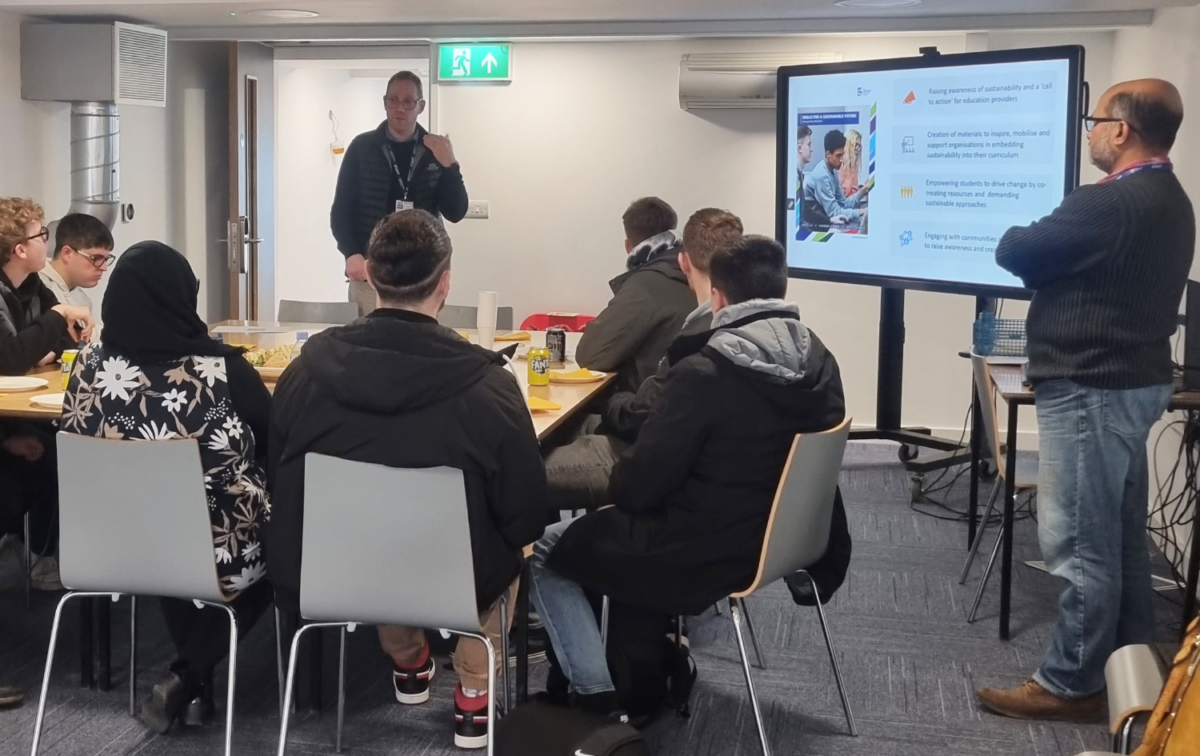What does the new government’s skills agenda mean for employers?

The policy priorities of the Labour government when it comes to skills are clear and can be captured in just one word:
Growth.
There’s more behind this, which I have summarised below, but that’s the headline.
In his speech on 27 August, the Prime Minister, Kier Starmer made it even clearer, saying:
“Growth, and frankly by that I mean wealth creation, is the number one priority of this Labour government”.
The objective is written into the name of the “Growth and Skills Levy” which will replace the Apprenticeship Levy. And it’s no accident that “Growth” comes before “Skills”, or that the name focuses our minds on the outputs rather than the means. Nor is it any coincidence that, in the list of groups that the Prime Minister said this government will serve, apprentices are named first. There is a recognition that apprentices help drive growth and wealth-creation.
The Growth and Skills Levy promises flexibilities that will allow employers to access other approved training as well as apprenticeships. Budgetary and other constraints mean this can’t happen straight away though, certainly not in any significant way. We may hear more on timing in the October budget.
To plan and implement the changes a new body, Skills England, is being established to deliver on the skills requirements that will come out of a new Industrial Strategy. The strategy will be developed by another new body, the “Industrial Strategy Council”.
All this will take time, so the advice to employers is not to “save” Levy funds or to pause programmes in the expectation of being able to spend it on other forms of training. If you have, or are planning to implement an apprenticeship programme that will help you grow your business, there is no logic in delaying. And for smaller businesses, 100% funding for younger apprentices remains in place (it is 95% for those aged 22 and above).
The pre-election talk of a Levy budget split of 50% for apprenticeships and 50% for other training has gone. Funding for wider skills training, when it comes, is likely to increase gradually. Also, it may not all go on training for those in work.
If the short-term message is “no change”, how should employers plan for the longer term? Change will come and there is talk of “hard choices” and of “prioritisation and de-prioritisation”. In our view, it all comes back to growth, in particular growth that is aligned with the priorities identified in Labour’s manifesto. For employers planning ahead, it’s worth looking at these (I have summarised them below) as well as asking some simple questions, such as:
- Is our apprenticeship programme truly inclusive? Is my organisation supporting new joiners from our local community and young people, as well as existing colleagues with skills development needs and career changers?
- Do we have clear business objectives and can we demonstrate the positive impact of our programme? At Damar, we measure progress and impact from day one – so you can measure not just success but also distance travelled.
- Are our apprentices succeeding and staying with us at the end of their programme? Have we set a target in partnership with our training providers and, if we are not hitting it, do we know why?
Next, if you have a successful, impactful apprenticeship programme, tell everyone about it, including, if you can, policy makers. It makes no difference whether you have just one apprentice or 1,000.
This is because there is a risk that policy makers, faced with hard choices and a desire to prioritise, inadvertently make the wrong decisions. For now, the Department for Education is in listening mode, so it’s time for employers, apprentices and those working in the sector to make their voices heard.
The rest of this article sets out more detail about how it should be possible, even in a time of budgetary pressures, to keep the best of the current apprenticeship system (and there is much that is excellent, despite what we sometimes read in the press), address the deficiencies and fix wider skills needs. Some of the points are similar to those in an article I posted on LinkedIn in June. Let’s break it down.
First, the money
Although employers that pay the Apprenticeship Levy only spend about 50% of their Levy “pots”, the apprenticeship budget is almost fully spent. How? Well, it’s because employers’ Levy contributions have only ever been loosely related to what is actually spent on apprenticeships.
In 2024/5 the Levy will raise c.£4 billion, but the Department for Education’s budget for apprenticeships in England (including the costs of running the system and apprenticeships for non-Levy paying employers) will be about £2.7b. £500 million or so will go to Scotland, Wales and Northern Ireland (where skills are devolved) and about £800m will be kept by the Treasury.
Funding for apprenticeships and skills could be increased in several ways, e.g.:
- Increasing the Levy from 0.5% to 0.6% would generate a further £800m annually
- Reducing the employer Levy payroll threshold from £3m to, say £2m or £2.5m
- Increasing the Department for Education budget to include some of the c.£800m currently being retained by the Treasury.
Given the pressures on the public purse, significant inroads into the £800m seem unlikely and the first two options would be unpopular with employers affected by them. However, even with no action, wage inflation means that the annual Levy take will continue to rise by c.5% a year, just by retaining the £3m Levy threshold. And we shouldn’t discount ways of encouraging employers to invest in skills outside apprenticeships – enhanced tax deductions for training costs, for example. Similar incentives have existed for investment in capital equipment, why not also for investment in that far more important asset, human capital?
Some combination of these measures would free up additional resources for investment in skills and apprenticeships, without significant pain. I am not arguing for no change; however, there is room to do more, and better, without materially depleting investment in apprenticeships.
Second, the priorities
Even without the Industrial Strategy we know many of these, from Labour’s manifesto and elsewhere. They include:
- Being “clear eyed” about those sectors where the UK enjoys advantages over other countries and investing in them. The manifesto singles out our excellent research institutions, financial and professional services, advanced manufacturing, and the creative industries.
- Social and regional equity – not just because these are good things, but because they will deliver growth. NEET figures are trending higher (12.2% of 16–24 year olds are currently not in employment, education or training). Worklessness and access to training and apprenticeships at entry level are issues in many parts of the country. Many high pay/high skill jobs remain largely concentrated in geographical pockets and are still filled, significantly, by those from “traditional” backgrounds.
- Reducing sectoral skills shortages, especially in areas where employers are currently having to import workers from overseas.
- Ensuring local skills needs are met and encouraging the retention and development of local talent.
Third, where is the current system working?
Apprenticeships are far better now than they were before the 2017 reforms (the Apprenticeship Levy and transition to employer-led apprenticeship “standards”). In particular:
- Employer engagement is far greater than ever before. Damar is involved in one trailblazer group in legal services where the employer group is currently more than 100 strong. That would have been unimaginable a decade ago.
- Apprenticeships are more robust. 15 years ago, some apprenticeships lasted little more than a few months and were principally exercises in checking off existing competence. Now, they last a minimum of a year, with some taking up to six years. They are designed to meet the needs of those with substantial skills gaps. That’s why they include at least six hours of training each week. Competence is independently assessed, by experts, at the end of the programme. In the past, providers and employers were often permitted to “mark their own homework”.
- The growth of higher and degree-level apprenticeships has allowed, for the first time, the creation of pathways that enable people to reach their full potential. At Damar, we have seen school and college leavers progress from level 3 business administrator up to chartered accountant, solicitor, chartered manager and chartered legal executive, to name just a few. We have former level 3 paralegal apprentices now part-way through solicitor apprenticeships, as well as graduates who were stuck in roles because there was no progression route (or not one they could afford) now on a path to qualification as a solicitor.
Fourth, where is it not?
- There are, almost certainly, too many apprenticeships (over 700) and some are too narrow. This can result in apprenticeships which develop skills that are insufficiently transferable, which have limited provision or which are uneconomic to deliver.
- Success rates are too low (currently around 54% nationally). Whilst they will never be as high as A levels or university degrees (apprenticeships are jobs and people leave jobs for all sorts of reasons), there is work to do here. Employer education is part of this – low success rates are often the result of poor understanding of what an apprenticeship is and students being enrolled for whom an apprenticeship is not the best option. Where programmes are well designed and delivered and a “right apprentice, right employer, right apprenticeship” approach is in place, much higher success rates are achievable.
- Because apprenticeships are currently the only funded option, too many employers and providers have been tempted to squeeze other types of skills need into an apprenticeship. In some cases, this might be best funded by the employer directly, potentially with some additional tax incentive as mentioned above. Or, if it is a priority area or a priority individual, and government funding is justified, by using non-apprenticeship training funded through the Growth and Skills Levy.
- The number of school leavers becoming apprentices has declined, particularly amongst those with weaker GCSEs. This is partly because apprenticeships have become harder but also because, as apprenticeships have become more challenging, there are proportionally fewer level 2 apprenticeships. More pre-apprenticeship provision and more level 2 apprenticeships would address this.
- Many small and medium-sized businesses, once the backbone of entry-level apprenticeship opportunities have disengaged, largely because of perceived bureaucratic complexity and a focus on the Levy (which they don’t pay). Clearer messaging and support for SMEs could address this. We are very proud that, at Damar, around three-quarters of our employer partners are non-Levy-payers and we have a specialist team to help them manage the whole process.
- Plus a basket of other niggles, all of which can be addressed. These include functional skills and the cost and complexity of some end-point assessments.
Finally
Growth and skills is undeniably the right approach. Apprenticeships do not exist for their own sake, their value is the difference they can make; a point that we lost in the name of the Apprenticeship Levy.
What matters is impact and, used well, they are a hugely powerful driver of personal, organisational and economic growth. It’s no coincidence that this aligns with our longstanding and shared ambition at Damar, which is for our apprentices, their employers and our colleagues to achieve their potential.
In other words, growth.
I hope you have found this interesting.
By Jonathan Bourne, MD and co-owner at Damar Limited











Responses